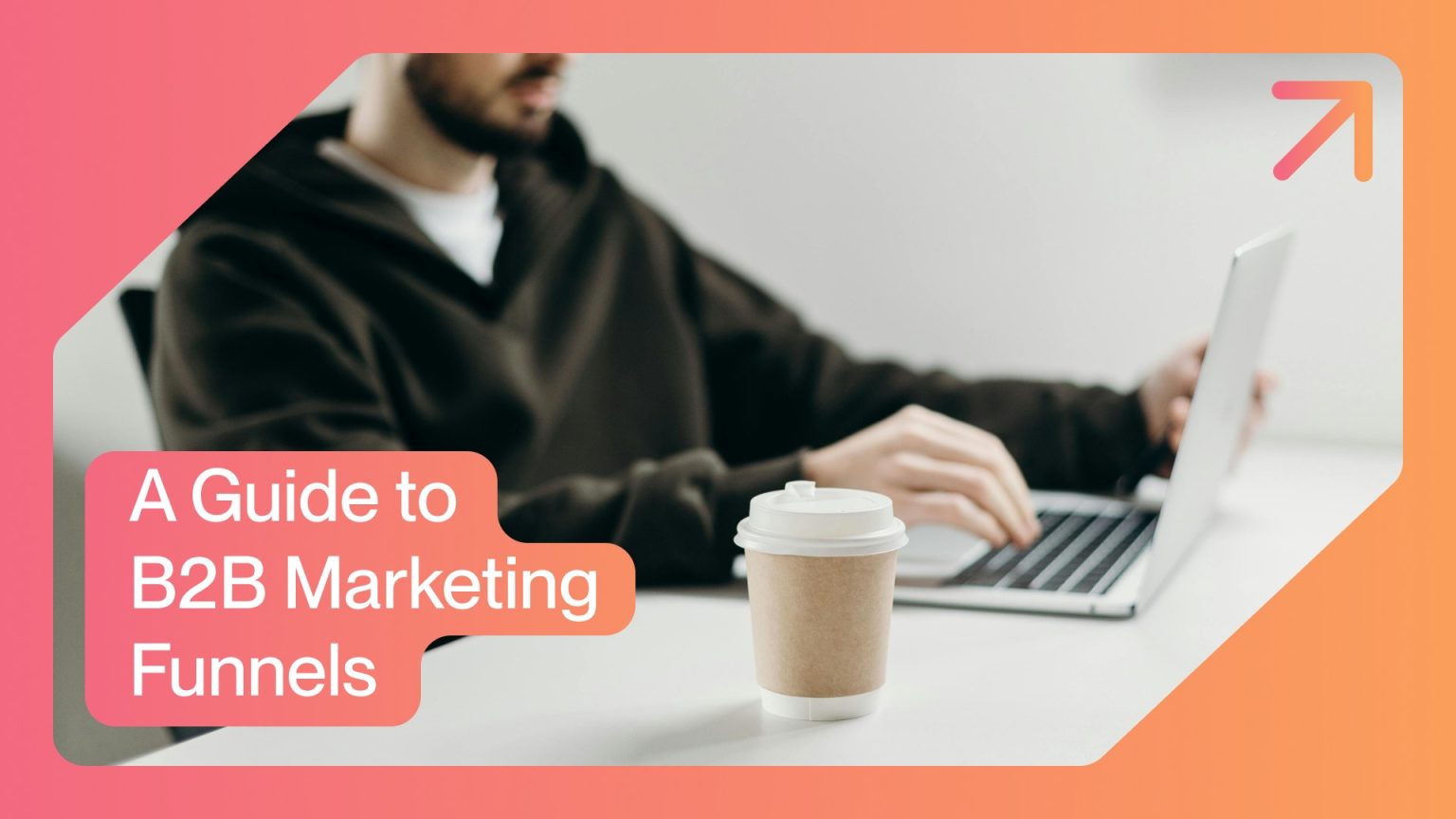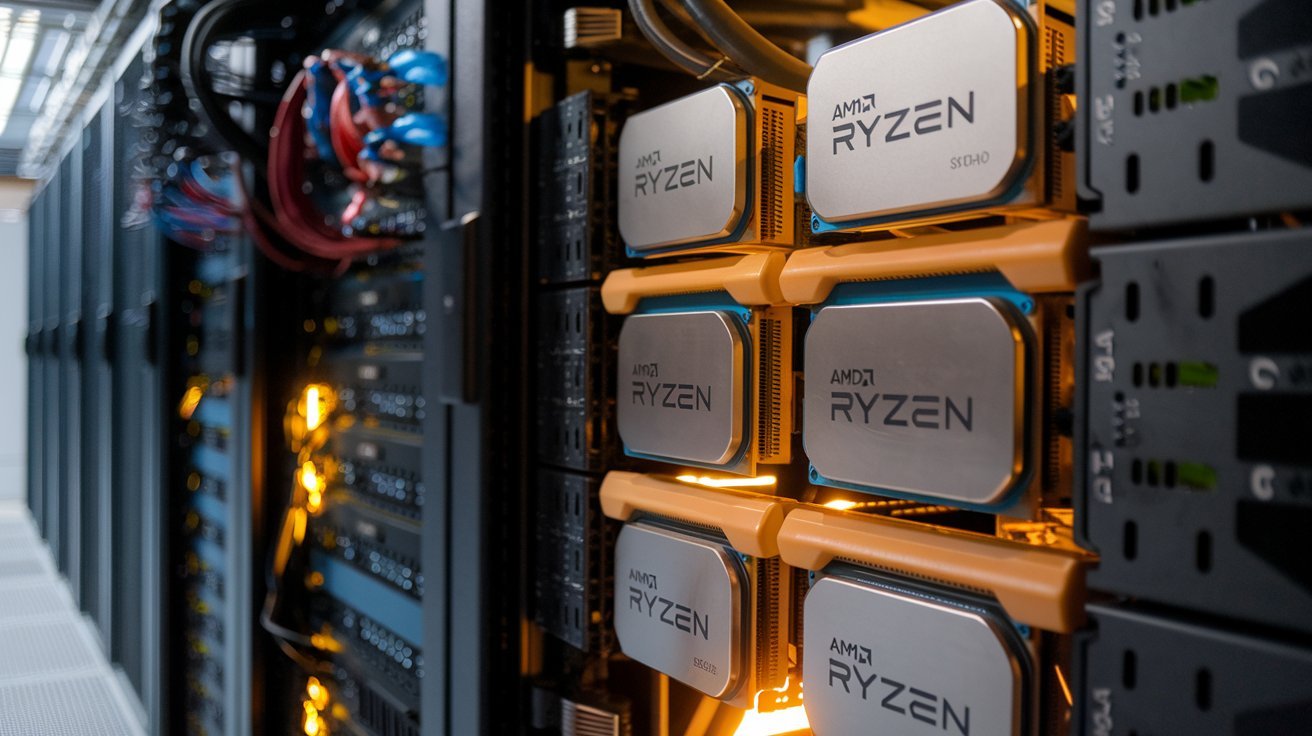You can think of a marketing funnel as a marketing team’s mindmap. It shows them where to start and, more importantly, keeps them on course.
Build a B2B Marketing Funnel
You see, marketing is a lot more complex than finding different ways of saying “buy me”. After all, you’re not going to ask someone to marry you on the first date, right? Why would you ask prospective customers to make such a big commitment, like signing up for a year contract, after the first encounter they had with your brand?
B2B marketing funnels are even more essential. There are multiple voices that you need to include and following a step-by-step approach will ensure that all the important stakeholders are engaged at the right moment.
From awareness to retention, here’s how to design B2B marketing funnels that ultimately lead to conversion.
What Is a B2B Marketing Funnel?
A B2B marketing funnel outlines the steps that prospective customers typically take before they buy a product or subscribe to a service. It looks at all the different touchpoints like website visits, product demos, etc. that your business will have with them.
The goal is to create a logical order so that the right type of content is shared with the right type of customer at the right time in their journey. If they’re still familiarizing themselves with your company and offering, showing them a LinkedIn ad encouraging them to buy today will have the opposite effect.
Like a funnel, you keep your efforts broad at the beginning. Then, with each step, you start to target your approach more.
This means that at each marketing funnel stage, your number of leads will typically drop. Don’t get alarmed. This is a sign that you’re on the right path.
Sales Funnels vs. Marketing Funnels
The terms sale funnel and marketing funnel are often used interchangeably, but they’re in fact distinct funnels.
Basically, the marketing funnel is all about lead generation. It details how your customers (other businesses) engage with your brand and covers marketing strategies and actions like B2B demand generation, SEO, and content marketing that you can use at the different stages of their journey.
On the other hand, the sales funnel concentrates on conversion rate (in other words, how to turn the leads generated by the marketing funnel into sales). It shows how the leads are guided through the funnel. Where the B2B marketing funnel focuses on touch points, the B2B sales funnel concentrates on actions like a product demo.
The Importance of the Marketing Funnel for B2B Businesses
Selling to B2B businesses requires a different approach. For one, you’ll need a lot more patience as the process lasts longer than the B2C buyer’s journey.
There are more decision-makers who need to get involved. You need to share specific product information at specific moments to address the different stakeholders’ interest.
As the B2B journey is more complex, your marketing team will need more direction. In short, they’ll need a detailed plan with steps that follow logically upon one another. Taking the time to create a marketing funnel will ensure that your team will know what to do and how to apply that consistently.
In fact, with the help of a marketing funnel, you might even be able to speed up the long sales process. As you know which questions and steps typically come next, you’ll be at least one move ahead, ensuring that momentum is never lost.
That said, considering that B2B customers typically spend more, it’s a worthwhile investment and a good idea to outsource this step to an experienced B2B marketing agency from the start. The last thing you want is to invest months into pursuing a potential customer only for the business to lose interest because you didn’t know how to keep them engaged.
Basic Stages of the B2B Marketing Funnel

When creating a marketing funnel for B2B businesses, you need to plan around the following four stages at the least:
TOFU (Top of the Funnel)
The top-of-the-funnel (aka TOFU) stage focuses on identifying potential customers. Instead of trying to secure a sign up immediately, the goal, rather, is to generate awareness about your brand and its products. As such, your activities will be centered around ways to grow brand awareness.
For example, B2B SaaS companies can create awareness and encourage target audience members to reach out by sharing educational material like a tutorial or how-to guide. Other ways that you can grab attention and improve brand awareness are through:
- Social media posts on LinkedIn
- Blog posts that discuss a relevant topic in general
- Influencer marketing
- SEO
- Paid ads
- Guest posts

Source: insiderintelligence.com
While your goal isn’t for their next action to be a sale, you want to create content and campaigns that encourage potential customers to engage further with your brand.
To measure the effectiveness of activities, you’ll monitor key performance indicators (KPIs) like website visits and ad clicks.
MOFU (Middle of the Funnel)
Now that you’ve broadly identified leads, the focus during the middle-of-the-funnel (aka MOFU) stage shifts to identifying which ones are qualified leads. Concentrating your efforts on leads that fit your ideal customer profile and with a strong buyer intent helps to use resources efficiently.
During this stage, your sales team will also start to build deeper relationships. You want to grow their interest in your business.
The emphasis starts to shift from growing brand awareness to building trust. You want to show that you understand their pain points and, more importantly, care about these.
Now, you can start to drill down on specific needs and suggest features that will help them to address these pain points. In other words, you can start to focus more on your product by highlighting how you can solve one of their specific pain points. That said, promotional content must still be kept to a minimum.
Types of content that you can start to incorporate include:
- Webinars
- A free trial
- A case study of a recent success story
- White papers
- Downloadable templates
Where you’ll typically share high-level content during the previous stage, you can start to create more targeted content for the MOFU stage. Ad clicks will still be a key metric to keep an eye on, but you’ll start to pay attention to downloads and click-through rates (CTRs) too.
BOFU (Bottom of the Funnel)
Finally, you’ve reached the stage where you can start to push a sale more directly. Target audience members who engage with your content during this stage are ready to make a decision.
Keep in mind, though, that most potential customers would have narrowed it down to a couple of businesses. This means that even if they’re ready to make a sale, they might not choose your product. So, the goal during this stage is conversion rate.
To help convince them that your product is the better option, you can offer:
- A free consultation, quote or product demonstration
- A limited-time upgrade offer to freemium users
As for the type of content you can create, experiment with:
- Video testimonials
- User-generated content
- Product reviews
- Landing pages directing them to the product page
- Blog posts that compare your product to your main competitors
Now, it’s also the right time to use retargeting or trigger-based email campaigns.
You can also afford to be more direct and promotional. For example, instead of using calls to action like “learn more” or “explore our product range”, you can use stronger prompts like “buy now” or “sign up”.
Post-funnel
Most discussions of the marketing funnel stop at the BOFU stage. However, as establishing long-term relationships is the name of the game, you need to grow brand loyalty and advocacy actively.
It’s especially important for B2B SaaS marketing that’s less about a one-time sale and more about starting a long-term relationship. You want subscribers to renew their plan — better yet if they upgrade to a higher tiered plan.
For example, SaaS companies often offer discounts when users opt to be billed annually instead of monthly. This way, they can extend that relationship for at least a year.
Including current customers in your marketing funnel is important for two reasons. Firstly, they’re more likely to convert. Secondly, they can become brand advocates.
Even with all the new interactive formats available to marketers, the best type of interaction remains between a customer and their network of family, friends, and colleagues. You want to encourage customers to advocate your brand and its offering. In B2B marketing, trust is critical and as word-of-mouth recommendations are more trustworthy, you want to leverage these.
Unlike the B2B marketing funnel, B2B marketing pricing doesn’t have to be as complex. That’s why NinjaPromo offers B2B marketing services as a subscription. Whether you have only one to two regular tasks or need a full marketing department, we have the capacity and pricing plan to meet your needs.
The most popular ways to do that include creating a loyalty program or leveraging affiliate marketing. You can also look at one-off activities like running a social media contest or sending a user a discount code to mark special milestones like a birthday.
In addition to spoiling them with points or discounts, you can also treat them to exclusive content. For example, if you’re planning to launch a new product or feature, inform them first.
During this stage, you can also continue to educate them about your product. The focus, though, is on how they can get the best out of their purchase. This presents the ideal opportunity for cross-selling and upselling.
For example, is there another product that will complement their recent purchase? Which features can they unlock by upgrading their subscription?
When their pain points change, you want them to turn to you first.
Customer service will also become critical during this stage. If there’s an issue, prioritize support.
How to Create a B2B Marketing Funnel

Step 1: Define your target audience
It’s important to remember that while your customers are businesses, you’re marketing to individual decision-makers within that business. You’ll need to know basic information like their demographics as well as their needs.
What are their pain points? Identifying this is critical as it will determine which product features and benefits you should highlight.
Use this information to create comprehensive target personas. Each target persona will represent a target audience group that shares certain characteristics.
Step 2: Align your sales and marketing teams
Your marketing and sales teams need to be on the same page. They need to know and understand the distinct strategies in the B2B customer lifecycle — awareness, engagement, evaluation, purchase, support, and loyalty — and their responsibilities during each of these stages.
These two teams need to communicate regularly. For example, if your marketing team concentrates on promoting demos, the sales team needs to know.
For the B2B marketing funnel to work, you’ll also need everyone’s support. Ensure that you involve all team members regularly. Each team has valuable insights that can help to streamline operations, while maximizing results. By involving all involved parties, you can also double-check that all the different stages, touchpoints, and actions are covered.
Step 3: Link touchpoints to channels
Your B2B social media marketing strategy will most likely depend heavily on LinkedIn. A survey of global marketers completed at the beginning of 2023 reveals that nearly half (48%) of B2B marketers identify LinkedIn as their most important social media platform.

Source: statista.com
After LinkedIn, you’ll probably find yourself using Facebook. The same survey found Facebook to be the second leading channel with 28% listing it as their most important.
48% of B2B marketers state LinkedIn is the most important social media channel for their business.
Basically, you need to be present and active on the channels where your target personas spend most of their time. In the case of B2B marketing, the decision-makers that you want to target are more active on professional sites like LinkedIn and Facebook than TikTok.
After social media, content marketing and email are two of the most popular channels for B2B inbound marketing. The 2023 State of B2B Digital Marketing report reveals that 45% of US B2B marketers feel email is the most effective channel for generating revenue.
The best B2B marketing strategy combines paid strategies with owned channels. When it comes to using paid ads, the 2023 State of B2B Digital Marketing report lists display advertising as the most effective, followed closely by paid search.
36% of US B2B marketers list display advertising as the most effective B2B channel vs 32% that prefer paid search.
Once you have a better idea of which channels you need to target, you can map out during which stage of your marketing funnel you’ll use which channel.
For example, your B2B buyers might typically become aware of your product by means of a blog post. This means that you’ll want to focus more on content marketing during the top-of-the-funnel stage.
You’ll probably find that touchpoints like clicking on an ad will only feature later in the marketing funnel. In this case, you’ll center your MOFU and BOFU activities around display ads and paid search, for example.
Step 4: Create high-quality content
Unlike B2C marketing, B2B marketing depends a lot more on educational content. As mentioned, the process is more complex. Different stakeholders need to give input and more thought is needed before such a costly expense gets approved.
To help with this drawn-out, decision-making process, B2B marketers can educate stakeholders about the product.
Tracking B2B marketing campaigns can be as complex as the marketing funnel itself. Using a range of metrics that include lead generation, conversion rate, customer acquisition cost, and customer lifetime value, NinjaPromo cuts through the fluff. We also believe in the value of qualitative research and use methods like interviews and surveys to evaluate customers’ feedback.
While quality always matters, it matters even more so in this industry. Your content will be read by heads of department, possibly even the company’s CEO. You need to put in place quality assurance measures so that each asset portrays your company in a credible light and speaks to your readers’ level of experience.
Examples of popular content assets that B2B businesses can create include:
- Downloadable guides and templates like checklists or spreadsheets
- Thought leadership articles
- Testimonials
- Case studies
- Interactive quizzes and calculators
- Podcasts
- Webinars
- Research reports
- Blog posts
At some point, you’ll need to offer lead magnets so that you can gather first-party data. These types of content are better shared towards the middle of the B2B marketing funnel as you first need to establish some level of trust before you can ask for this type of information.
Step 5: Measure, monitor and optimize
While you need to take a step-by-step approach to B2B marketing and the stages follow a set order, your strategies should evolve. However, you can’t make changes based on guesses. You need to know which channels and content pieces were successful and which failed. It’s a data-driven process that’s informed by metrics.
Identify which metrics you want to track. In addition to conversion rate, you’ll also look at metrics like email newsletter sign-ups, the number of downloads, click-through rates, abandonment rate, and bounce rate.
When tracking these metrics, it’s key that you keep in mind benchmarks for your specific industry. For example, the average conversion rate for B2B SaaS is only 1.1%, but for B2B manufacturing, it’s double that.

Source: firstpagesage.com
Conclusion
Marketers might be encouraged to think outside of the box, but not outside of the marketing funnel. There needs to be a logical progression in the messaging.
Creating a sense of urgency might work when you’re selling to individual consumers. However, businesses need time. They need more than one person’s input. Plus, then there’s also the issue of red tape involved in getting purchases approved.
Learn from your customers and take your time when planning your B2B marketing strategy. Use the stages of the marketing funnel as guidance and plot out which channels and content you need to educate, engage, and convert.
Read More 2800 Block Of Southeast Colt Drive: Exploring The Hidden Gem






